
History of Los Angeles (City)
Page Three (I thought your eyes could use a change of background)
| It was from his gubernatorial residence, the old two-story adobe at the corner of Aliso and Los Angeles Streets, that Fre'mont set forth with Jesus Pico and Jacob Dodson for his famous mustang ride to Monterey. The feat, with its object, to defend his position as Governor against Kearny, was such as to appeal to the imagination of the people of Los Angeles, both Mexican rancheros and American trappers and sailors. Over desert and mountain the three riders flew, leaving on the morning of March 22nd and reaching Monterey, five hundred miles away, on the afternoon of the fourth day. The return was accomplished with equal speed, so that the trip of one thousand miles was made in a little over eight days. Fremont did great service in the Senate of the United States, where he pleaded for the land rights of Indian and Spanish residents, and in later years, when his influence aided in the exclusion of slavery from the new State of California. The town council was re-established in 1847, Don Jose' Salazar and Don Enrique Abila being alcalde; but in 1848 Governor Mason dissolved the council and installed Stephen G. Foster as alcalde. A semi-military rule was kept up under Colonel Stevenson until May, 1849, when a new ayuntamiento was established. | |
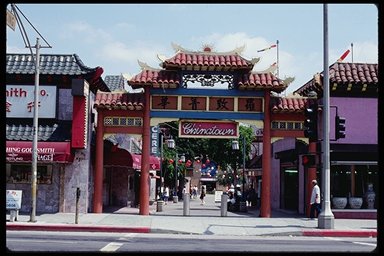 |
|
| The cattle trade was at its best from 1850 to 1860, when in one year one hundred thousand hides at $15 a piece were shipped from San Pedro, but the business was injured by the drought of 1863 and 1864. The town grew slowly, increasing in orchards and vineyards, its ranchos, many new ones having been granted by Pico in 1846, sheltered in the bend of the Los Angeles River, which, by ancient decree, is, from the mountains down, the property of the city. In 1851 Los Angeles grapes brought in San Francisco 20 cts. a pound; at the mines, $1. The city escaped the excitement of the gold fever, although the yellow metal was first discovered near Los Angeles in 1835. Among the noted Spanish families at the time of the conquest were the Lugos, the Sepulvedas, the Bandinis, the Estudillos, the Oliveros, the Picos, and the Coronels. Prominent among the pioneers of old Los Angeles were the Workmans, Temples, and Wolfskills, David W. Alexander, Colonel Couts, and Governor Downey, Judge J.R. Scott and Benjamin D. Wilson, Robert S. Baker and Hugo Reid. Hon. H.C. Foster, one of the early mayors of Los Angeles, became a resident of the city in 1847. Governor Pio Pico, who had fled at the approach of Stockton to save the "honor" of Mexico, returned and became a conspicuous private citizen. He lived to a great age, duly performing his duty as a registered voter. | |
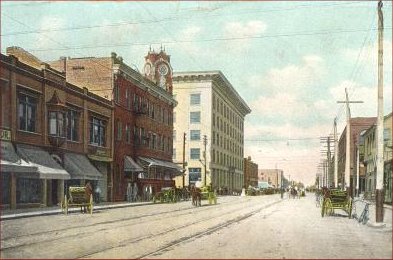 |
|
| It was Don Antonio Coronel, dead but a decade, who most picturesquely and honorably represented to the new Los Angeles the old regime. He was of "courtly presence, ripe experiences, high integrity, and great personal fascination," and was to his latest days "a quenchless patriot, white-haired, clear-eyed, and supple," the life of any circle he might be persuaded to adorn. His father, Don Ignacio Coronel, came to the town with the Hijar Colony. He was a man of note and opened in 1839 a school, much needed, in the fact be true that there were then in the pueblo but fifty-four men who could read and write. Antonio was in 1843 Vistador del Sud under the Mexican, and in 1853 Mayor of Los Angeles under the American, Government. He was a warm friend of Helen Hunt Jackson, who thoroughly identified herself with the interests of the older peoples of Los Angeles and its environs. | |
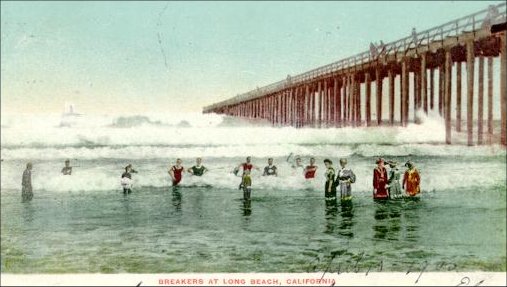 |
|
| Up to 1852 the houses in Los Angeles were of adobe, the sun baked brick of the country, and these were comfortable indeed, cool in summer and warm in winter. It was in one of these ample residences that of Colonel J.G. Nicols that the Riv. J.W. Brier, of the M E. Church held the first regular Protestant service, and in another that the Riv. Dr. Wicks, a Presbyterian, opened the first English speaking school. These events were in 1850, so that church and school were ready to receive the first American child (Gregg Nichols, who was born in April, 1851). | |
 |
|
| The corner of Third and Main Streets blossomed into brick in 1852, in the new, proud, one-story building, serving, in 1859, as the home of Captain Winfield S. Hancock, who was always exceedingly popular in Los Angeles. He revisited the city a few years before his death, and received an enthusiastic ovation. | |
 |
|
| In 1849 San Pedro had the first steamer, the old Gold Hunter, and by 1859 the Senator made three monthly trips. There was now a stage line to San Diego, and overland stages left for the East three time a week. Frequent freight trains passed between the city and Salt lake, but it was not until the coming of the several railroads that Los Angeles attained its phenomenal growth and became the great city of the Southwest. Set richly between the sparkling waves of the Pacific and the jasper heights of the Sierra Madre Mountains, Los Angeles now rests in its fertile plains, a radiating jewel, its suburbs climbing the bases of its hills, its roads ascending canons, its sparkling beaches curving sharply inward from the sea. Its clustered cottages are surrounded with trees and flowers, which bloom throughout the year in inconceivable profusion. Its streets are lined with graceful pepper and eucalyptus trees, its palatial homes are set amid tropic foliage, its hills are crowned with public institutions. The southern portion of the city is level, but on the north and south are hills. Within the city limits, at a level of three hundred feet above the sea, may be found great variety of location, while seven public parks, soon to be united by boulevards, add to the beauty of the natural scenery. No wonder that in twenty years the population has grown from 11,000 to 103,000 increased during the winter months by thousands of tourist, who are brought easily to the gates of this city of the sunset land.Its daring trolleys mount the great hills from rose garden to snowy height, its railroads, entering from east and north, bear the charmed traveler through sunny ranches of olive and walnut tree, through great vineyards and orange orchards; and to ships entering the harbor at San Pedro are revealed the beauties of flower swept hills, which in their season flaunt their fields of yellow poppy toward the sea. | |
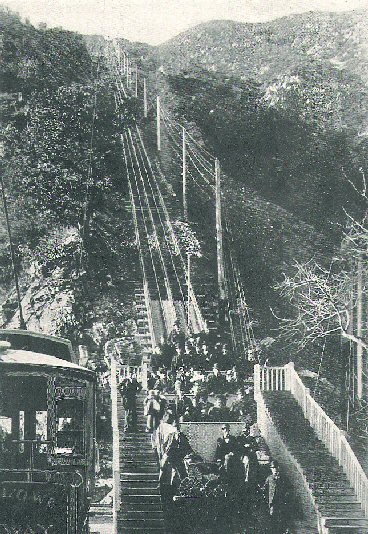 |
|
| The saddest event in the history of modern Los Angeles was the land boom, which, after first enriching and then ruining many inhabitants, collapsed in 1889, leaving the town prostrate. The rise in values was so rapid that a corner lot costing in 1851 thirty dollars, and worth in 1860 $300 a front foot, increased by 1870 to $500 and by 1880 to $1,000 a front foot. In 1889 its sale was pushed to $2,500. Other lots worth in 1883 $20, brought in 1889 $800 a front foot. Lands outside the town, worth up to 1868 $1 an acre, brought, in 1887, $1,000. | |
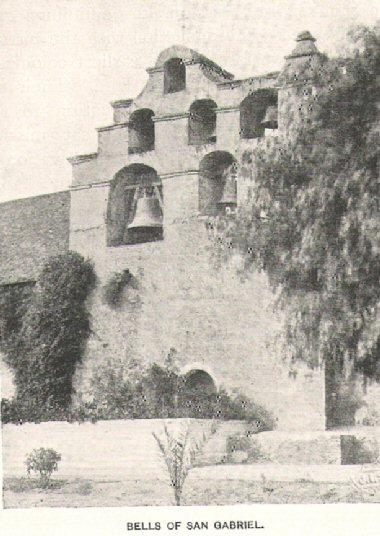 |
|
| The effects of this over-expansion on the young, vigorous, richly dowered community were, however, but temporary; the city of the Angels arose from temporary defeat to enter at once upon an era of growth and prosperity unexampled in the history of cities, and all but magic in its extent. | |
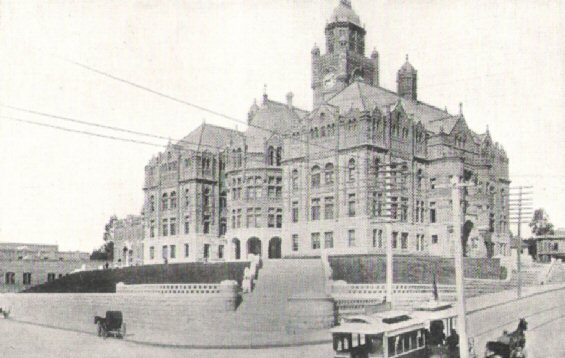 |
|
| A dozen lines of railroad center in the city, whose trade extends from Fresno on the north to the easternmost limits of Arizona. Eighteen years ago the city adopted a successful scheme of electric lighting, and its trolley system is one of the best in the United States. For the last decade the building trades have been rapidly growing. Building permits to the value of $23,000,000 have been issued, and in 1900 alone $2,7000,000 was invested in new buildings. | |
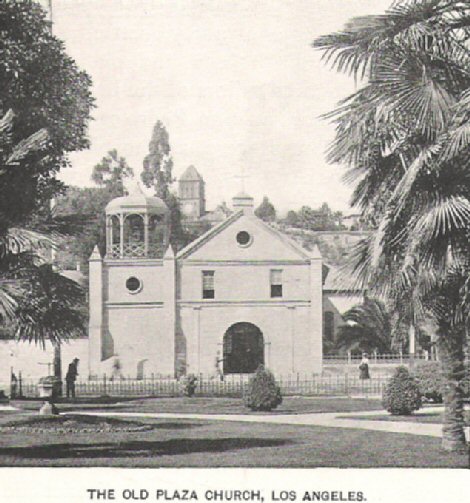 |
|
| The city has 200 miles of paved streets, 330 miles of sidewalks, and 160 miles of sewers; but its complete and perfect system of irrigation is one of its greatest beauties. The "Zanjero" has from its earliest years been an important municipal functionary,and the flowing of well-kept channels of fine water, in sparkling zanjos along the sides of the principal streets, adds to the beauty of roads and grounds, while through a system of new and beautiful parks the visitor can obtain some of the finest views in the world by simply driving about the city. | |
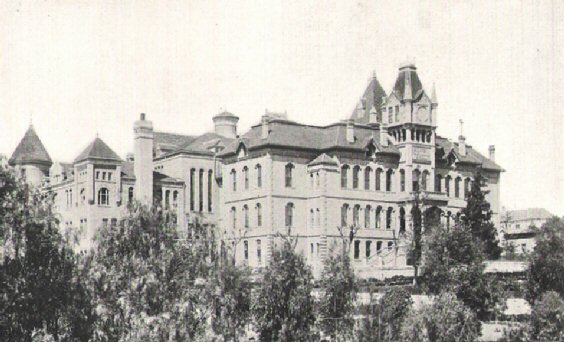 |
|
| If the traveler seek the suburbs he will drive for mile after mile through groves of orange and lemon, fig, peach, pear, and apricot orchards; he will see on one side of the town great sweeps of almond and walnut trees; on another, ranches planted in vineyard and olive. There are, perhaps, three million fruit trees growing in the district, half of which are in full bearing. The land bears, too, great crops of alfalfa, which in fertile places is cut from three to six times a year. Oranges, of course, are the chief export; but there are, besides, wine, brandy, wheat and barley, sugar-case, and all varieties of fresh vegetables. If the tenderfoot hear that Los Angeles corn grows sometimes to a height of twenty feet, that pumpkins weighing four hundred pounds have been raised, or even that holes from which beets have been pulled are of a size sufficient for fencepost, he need not doubt. There are three large beet-sugar factories, and in the country $100,000 worth of olives, and more than that of honey, are annually produced. | |
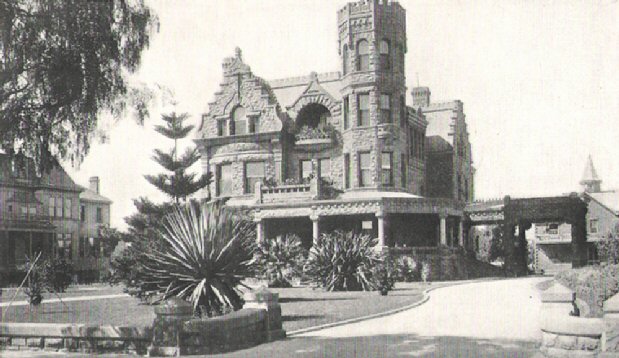 |
|
The population of the city is cosmopolitan, as may be known from the fact that, in addition to the exceptionally good English papers of the city, organs in German, French, Spanish, Italian, Basque, and Chinese are issued. A large number of Chinese, several thousand, are engaged in raising vegetables or in domestic labor of the several kinds. As in all California towns, they have a residence section of their own, and are quiet, orderly, reliable, and useful.
|
|
| Los Angeles is a city of churches, and its philanthropies are many; its educational advantages are remarkably good. At the head of a noticeably complete system of training stands the University of Southern California, which opened its doors in 1880, with Dr. Bovard as President. Its College of Medicine is a well-equipped institution, and its progress is identified with the name of Dr. J. P. Widney. An exceptionally fine normal school completed the training given by the public-school system, with its high schools and fifty-five grammar schools, all housed in buildings which might be the pride of any community. The buildings which house its free library system, its City Hall, and it County Courthouse, are well conceived for their several purposes, and architecturally of great beauty. | |
 |
|
| But Los Angeles is above all a city of homes and of gardens. The mildness of the climate permits the most delicate plants and trees to flourish throughout the winter. Giant bananas, fan- and date-palms rise above the houses, and at Christmas are seen hedges of callas, geraniums ten feet high, heliotropes covering whole sides of houses, and such wealth of roses and orange blossoms as baffles description. A feature of Los Angles is its beautiful sea beaches. Easily accessible by trolley and by rail, Santa Monica, Redondo, Long Beach, and San Pedro provide unsurpassed facilities to the citizens, and the island of Santa Catalina, twenty miles off the coast, is even more attractive - a seashore resort where bathing is a comfortable pastime every day in the year, and where fishermen find delights unending. |
|
 |
|
| The construction of the Government breakwater at San Pedro is a great commercial enterprise and will be of certain benefit to the city, which will thus gain a larger share of the increasing trade with the Orient. Three million dollars have been appropriated for deepening the water over the bar, so that large vessels may come to the wharf. Dry docks and fortifications are to follow; and a new railway, with its terminal at San Pedro, will connect Los Angeles with Salt Lake City, and open to trade a new and rich section of country in southern Nevada and in Utah. End. |
Taken from "Historic Towns of The Western States edited by Lyman P. Powell 1901.
© 2005 by Ray Ensing